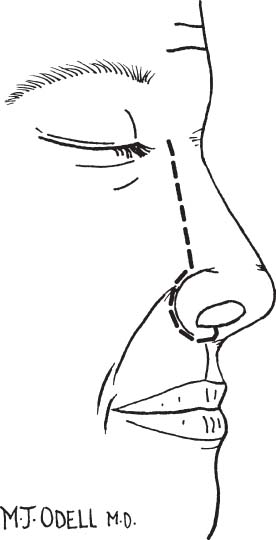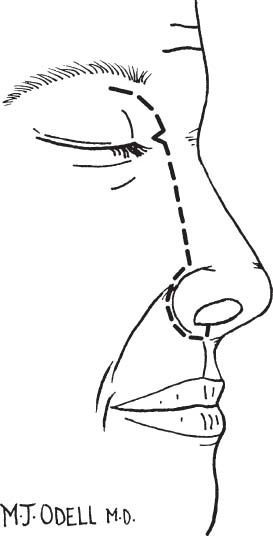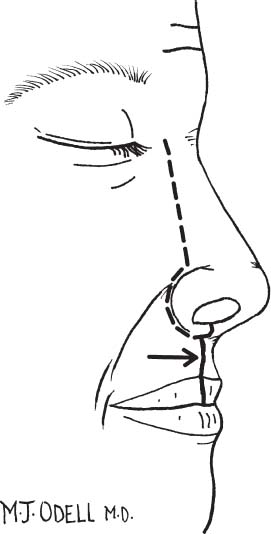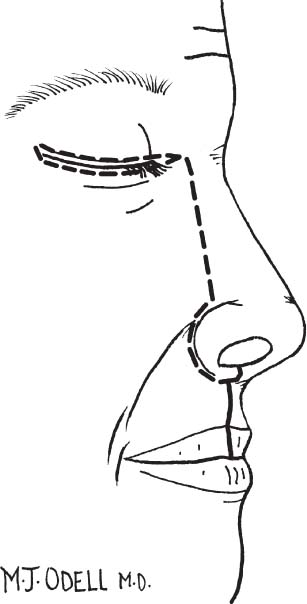34 Figure 34–1 Lateral rhinotomy. These extensions can be combined, and almost all types of maxillectomy can be performed via this approach and its variations. Figure 34–2 Lateral rhinotomy with Lynch extension. A small W-plasty is incorporated at the medial canthal level to minimize webbing. Figure 34–3 Weber-Ferguson incision. The arrow demonstrates lip-splitting incision. Figure 34–4 Weber-Ferguson incision with supra- and subciliary incisions.
Partial and Total Maxillectomy
Michael J. Odell and Patrick J. Gullane
♦ Preoperative Considerations
♦ Surgical Technique
Incisions
External Incisions

Internal Incisions



Maxillectomy
Limited Maxillectomy
Stay updated, free articles. Join our Telegram channel

Full access? Get Clinical Tree




